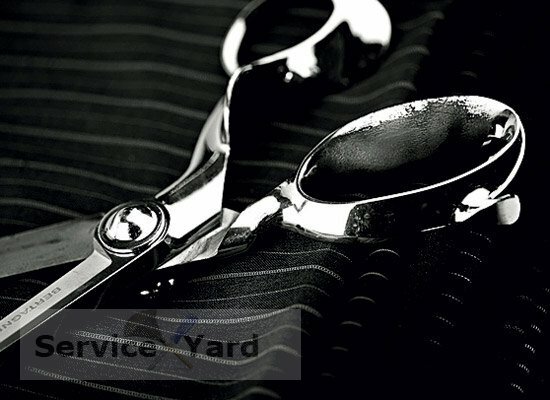
- Popular Causes of Cracking and Chipping
- How to properly glue the toilet bowl?
- How can I glue ceramic plumbing?
Despite its solidity and apparent strength, the products made of sanitary ware are fragile enough. At a sloppy attitude, unaesthetic chips and cracks may appear on it. In this article, we will tell you how to glue the toilet bowl to at least extend the period of its exploitation. However, it is worth remembering that gluing is considered only as a temporary measure, because when cracking the device loses its aesthetic and operational properties.
to contents ↑Popular causes of cracking and chips cleared
To avoid damage to the sanitary faience, you need to know what causes the most often lead to the appearance of cracks and chips:
- According to statistics, the first place is falling into the toilet bowl of a variety of subjects. In most cases, this is due to the fact that the owners of small apartments try to use every centimeter of the free space and place shelves or lockers for storing household chemicals and various household items directly in the bathroom. In this case, the slightest negligence is enough - your plumbing will be damaged.
- The next reason may be sudden temperature changes. They cause uneven expansion or contraction of the material, create internal tension. Such a process can lead to the appearance of cracks on the toilet bowl.
- Incorrect installation is the third reason. Errors in the installation - unevenly tightened fasteners or excessive force when tightening the fastening bolts, can also provoke the appearance of cracks on the tank.
Important! It is necessary to know that such consequences as cracks can occur not immediately, but after a certain time. And, in some cases, it takes a long time to wait. If these three reasons are excluded, it is almost guaranteed to save your sanitation from damage and destruction.
However, if you still have trouble, you can try to cope with the problem with the help of improvised tools.
to the contents ↑How to properly glue the toilet bowl?
Usually repair of cracked plumbing is done in several stages.
Stage # 1 - Preparation of
bonding surface Preparation for plumbing repair is as follows:
- The problematic area is thoroughly cleaned with sandpaper.
- The damage area is wiped to remove small particles of the ceramic.
- Degreasing the area of damage with gasoline or acetone.
- Surplus moisture evaporates from the site of the future seam due to a thorough warming up of the product with a hair dryer.
Important! A slightly different preparation will be if the fault has a complex relief of the fault. In this case, sandpaper can not be cleaned. When using it, it is possible to unduly bump bulges, and in the process of gluing, the formation of voids is possible, the presence of which will adversely affect the strength of the seam on the tank. The processing of such a seam should be done only slightly, first using a hair dryer remove small fragments, degrease, dry and apply a thin layer of glue.
Stage # 2 - Bonding
Before using the adhesive, we carefully read the instructions and act according to recommendations given by the manufacturer. Often, the adhesive for the toilet is used as follows:
- On the cleavage or crack, a layer of adhesive is applied gently.
- Waiting for the specified time interval in the instruction.
- The bonded surfaces are strongly pressed against each other.
Important! In many respects the result of gluing will depend on the strength of the clasp - the stronger it is, the stronger will be the seam. For more reliable fixation of the repair area, you can use a tight elastic bandage or clamp. When the glue dries, the repaired area will require additional processing.

Stage # 3 - Internal Seam Strengthening
The joint inside the toilet should be reinforced, according to the following algorithm:
- The surface is cleaned with a sanding cloth, degreased and dried with a hair dryer.
- The seam is greased with glue, after which a strip of thin plastic or soft metal is placed on it, which will act as an amplifier.
- A special mortar designed for seams of ceramic tiles is treated with a glued external damage.
Important! Grout comes in different colors, so you need to choose a shade that suits the tank or the toilet itself.
to the contents ↑How can I glue ceramic plumbing?
When choosing what to seal the toilet bowl, pay attention to the following ready-made compounds:
- Unicum;
- Mars;
- Rapid;
- BF-2;
- EPO;
- MC-1;
- EPD.
If, for some reason, their use is undesirable or impossible, you can use self-made glue. There are many recipes for preparing such formulations, however, the following are the most popular.
Option number 1
This adhesive should be prepared immediately before use, as it quickly sets. Therefore, it is first necessary to prepare the surfaces to be bonded and only then to make glue. To prepare the adhesive, one part of quicklime is thoroughly mixed with ten parts of chalk and two and a half parts of liquid glass.
Variant 2
In two parts of pure water, 10 parts of casein and 1 part of borax are mixed. To the seam, which will be stuck together with the composition, was waterproof, it is recommended to pour in a few drops of aluminum alum or formalin solution. All this carefully mix.
Important! The glue prepared according to this recipe will completely harden after 2 or 3 hours. During this time you need to have time to carry out all the repairs.
Option number 3
This composition can be prepared "in reserve", it can be stored for a long time and not deteriorate. To make it, you need to do the following:
- Take one part of turpentine and two parts of light shellac.
- Place the utensils with ingredients on a slow fire.
- When shellac completely melts, it is thoroughly mixed with turpentine.
- The resulting composition is cooled.
Important! Such glue can be put on storage, dividing into pieces. If there is a need, they can be warmed up and apply a thin layer on the glued surfaces, which then compress with effort. The surplus of glue that came out is immediately removed.
Unfortunately, no one can be insured against such serious trouble as a chip or crack on the toilet. If you exclude the most common causes of spoilage of equipment, you can maximally secure your plumbing. However, if we did not manage to avoid the trouble, we hope that the recommendations given by us will help you glue the toilet bowl, prolonging the period of its operation until the purchase of new plumbing equipment.



